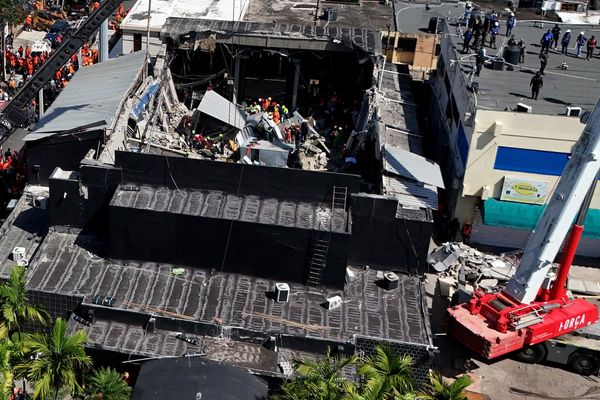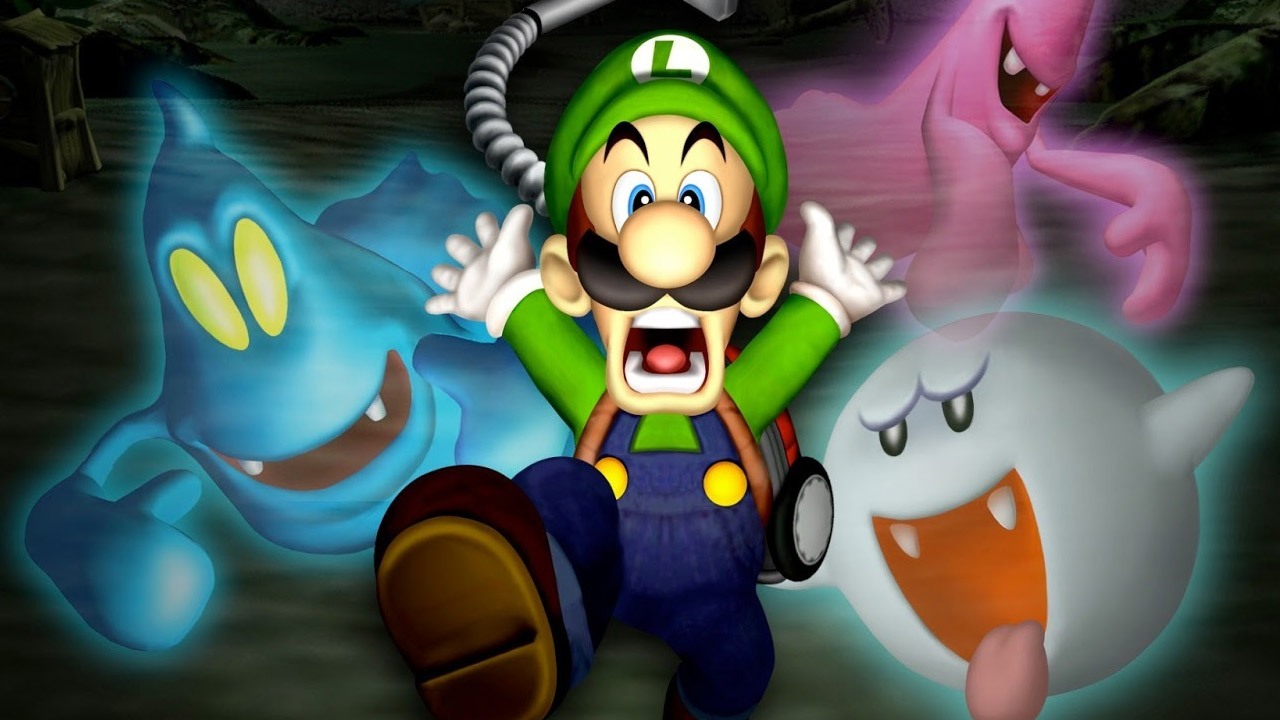
The GameCube may be over 20 years old but the best GameCube games are still as iconic as ever today. Nintendo's quirky and much-beloved fourth home console had some absolutely smashing titles, which have gone down in history as some of Nintendo's most unique and eclectic games.
While we've seen Nintendo bring some GameCube titles to the Switch (including some of the best Mario games and best Metroid games around), there's still plenty of experiences that we're still hoping get a second wind via Nintendo's latest console. But for now, we can console ourselves with the ability to play Switch games using a GameCube controller.
GameCube may not have had the most games, but it was never lacking in quality, playing host to some of the best entries in the Zelda and Resident Evil franchises while also bringing an array of incredible, wholly original content. So, join us and dive into a piece of gaming history as we celebrate the 25 best GameCube games ever made.
25. Super Mario Strikers

Developer: Next Level Games
Released: 2005
Mario and his amazing friends have dominated sports like tennis, golf, basketball, and baseball for years, always in the spirit of friendly competition. That all changed when the Mushroom Kingdom players entered the soccer pitch, as they competed with more intensity and aggression than we'd ever seen.
It's strange enough to see Mario grit his teeth, let alone brutishly shove Peach into an electrified wall. That tough exterior made Strikers stand out from the rest of Mario's sports discography, though the enjoyable gameplay fits nicely with the series' tradition of inclusive gaming. If you wanted soccer mixed in with random violence, this was your best football game to pick up on the Cube.
Read our Super Mario Strikers review.
24. Skies of Arcadia Legends
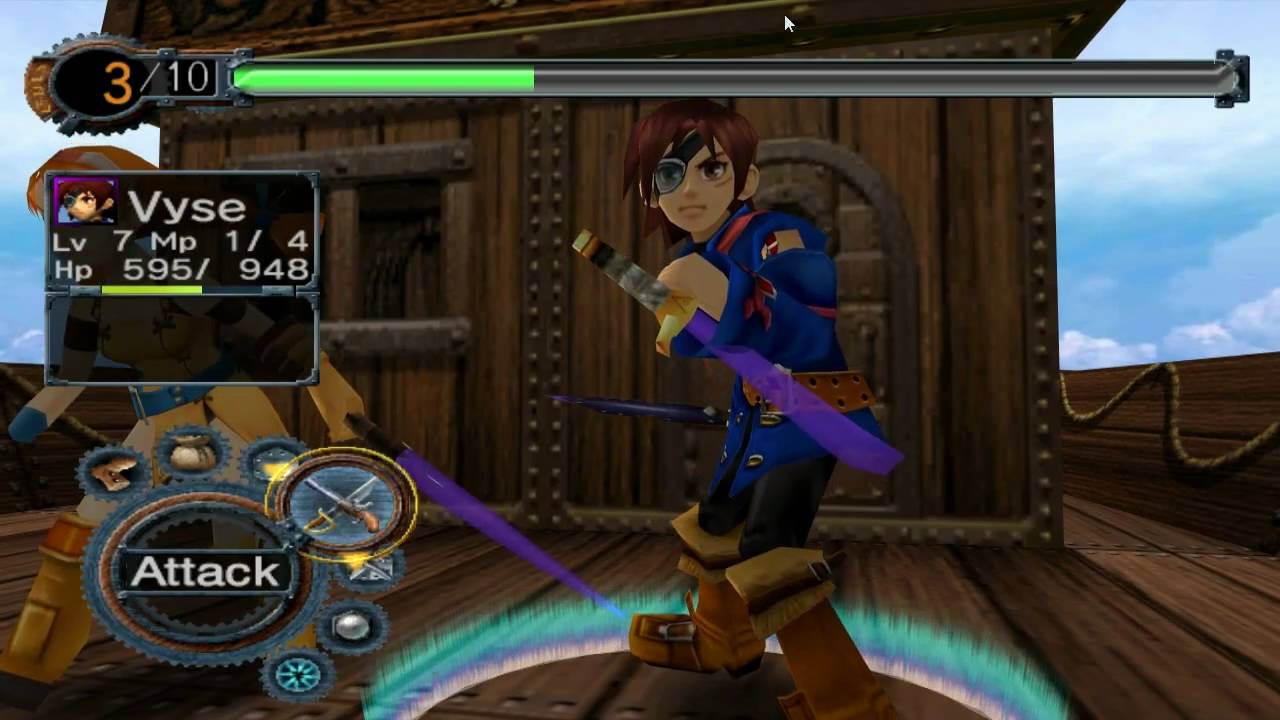
Developer: Overworks
Released: 2002
Skies of Arcadia reigns as one of the premier Dreamcast RPGs. You'll quickly fall in love with Vyse and his Blue Rogues as they fight the evil Valuan Empire. Sega, after the Dreamcast unfortunately floundered, decided to port this excellent first-party RPG to the GameCube, re-dubbing it as Skies of Arcadia Legends.
The epic dungeon battles are intact, the discovery system still works (now with more discoveries!), and the battle system made the cut virtually untouched. Legends is the same game Dreamcast owners loved, just with some minor new elements and a fresh coat of paint. Any love of the best RPGs who missed Skies of Arcadia the first time around no longer has any excuse to pass this port up.
23. Ikaruga
Developer: Treasure
Released: 2001
In a time when shoot-'em-ups no longer meant a thing, to see one so beautiful and so intoxicatingly vibrant come to consoles was a real feat. The game's focus on duality gives your ship its two distinct colors (black and white). One color can absorb like-colored bullets and store them for your own screen-clearing assault, but the other can deal double damage to enemies of the opposite color.
It all boils down to a flurry of black and white pellets flying across the screen in a seemingly inescapable frenzy of action. When it's all in motion, your eyes will glaze over, and raw instinct takes over. For those watching from afar, Ikaruga looks like a piece of flowing art. It really is that amazing. Sadly, the game barely made a splash when it was released, but its legacy lives on as a downloadable. Despite low sales and even lower awareness, those in the know will defend the title and its more obscure Sega Saturn sister, Radiant Silvergun, as the pinnacles of twitchy shooter insanity.
Read our Ikaruga review.
22. Beyond Good and Evil

Developer: Ubisoft Pictures
Released: 2003
Frank West can go pound sand. Jade is gaming's original photojournalist, and she's much better at her job, too. Beyond Good and Evil has reached cult status among gamers, to the point where its recently announced sequel became the most talked about news to come out of E3 2017 by a giant pig-sized margin.
Everything about the game shines: the writing, the characters, the story, the graphics... there's not a whole lot that can be found wrong with it. This incredible package only makes us wish that the oft-rumored sequel would present itself already. We're tired of waiting, Ubisoft. Give us more Jade.
Read our Beyond Good & Evil HD review.
21. TimeSplitters: Future Perfect
Developer: Free Radical Design
Released: 2005
We play a lot of serious games around the GR+ offices, and every once in a while it's good to have a laugh at whatever's happening on the TV screen. Better still is when the game makes us laugh instead of laying on the seriousness. We need to look no further than TimeSplitters: Future Perfect for a good chuckle.
On a system bereft of first-person shooters, Future Perfect does a terrific job of representing the genre. Fast-paced action joins forces with a high comedy factor to create a game that's just plain fun. That's what video games are supposed to be, right? Fun.
Check out our list of best FPS games next.
20. Fire Emblem: Path of Radiance
Developer: Intelligent Systems
Released: 2005
The Fire Emblem series is probably the most niche long-running Nintendo franchise out there, with the turn-based RPG having been around since the Japanese version of the NES, the Famicom. It seemed like it would never come to America, but thanks to the popularity of Fire Emblem characters that appeared in Smash Bros., it was given a chance internationally. And it gave western gamers exactly what Japanese fans had loved for years, even if many US GameCube owners weren't as excited.
The turn-based, stat-heavy action didn't look too impressive, even at the time, with the grid map and small characters. Fortunately, it didn't need to, as the traditional strategy gameplay was as addictive then as it always has been. And it was nice to see a Nintendo game that didn't take it easy on the player, with high difficulty and permanent team member death. For those who bothered to find it, they'll never forget it.
Read our Fire Emblem: Path of Radiance review.
19. Luigi's Mansion
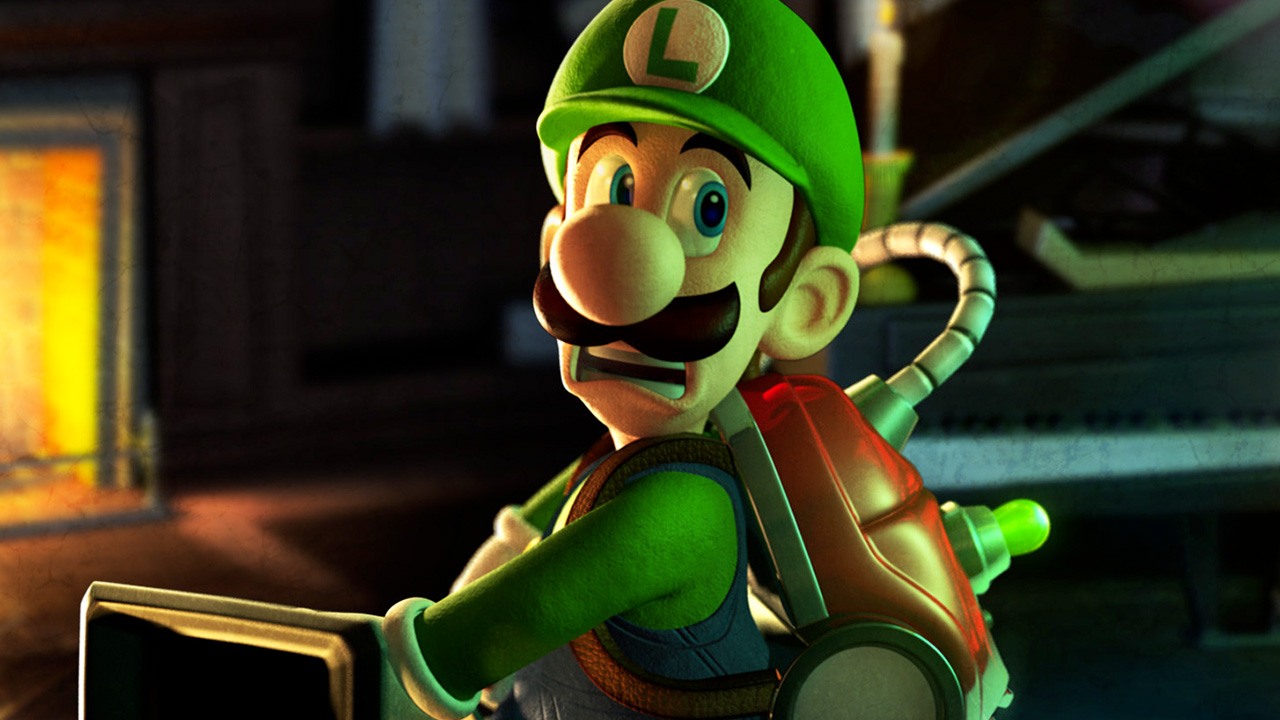
Developer: Nintendo EAD
Released: 2001
Luigi and his GameCube launch game Luigi's Mansion have been unfairly maligned for over a decade. Though it's far from the best launch game in Nintendo history, and it wasn't as revolutionary as a core Mario platformer, Weegee's spooky adventure remains an underrated gem.
Constant coward Luigi ends up trapped in a huge haunted house and to save Mario; he has to overcome his fear and capture all the ghosts via a modified vacuum cleaner. The G-rated scares and creepy atmosphere marked a new style for Nintendo, and the experiment paid off. If you missed out on this one, set aside a weekend and dig it up.
Read our Luigi's Mansion 3 review.
18. Tales of Symphonia
Developer: Namco Tales Studio
Released: 2003
It takes talent to transcend a nonsense plot. Symphonia's plot doesn't twist so much as it sprains. But the characters are so likable that you'll let it sail by with a shrug. Hero Lloyd is predictably naive, but it plays well off of his friend Colette's dopiness, tutor Raine's cynicism, and swordsman Kratos' battle-hardened experience. You won't want to, but you'll fall in love with the cast.
Even more important are the game's battles. You take direct control of Lloyd, whose two swords make slicing up enemies simple and fun. In fact, Symphonia is that rare RPG where the battles are addictive. You'll find yourself chasing enemies with the intent to push for higher combos, and striving to earn new special attacks to optimize your strategy. Backed up by three computer-controlled allies, the battles are swift and never dull. Add in truly appealing, butter-smooth anime-style graphics and you have a game that looks great and plays better.
Read our Tales of Symphonia review.
17. Mario Kart: Double Dash
Developer: Nintendo EAD
Released: 2003
Double Dash didn't revolutionize the Mario Kart franchise like many hoped it would, but the improvements here go beyond surface deep. The character and vehicle selection is huge, the new weapons are appropriately insane complements to returning classics, and the tracks themselves have never been this diverse. Wario Colosseum is such an exhaustively twisty daredevil affair that it's only two laps long, while Baby Park is so simple in its round-and-round madness that it requires seven.
Of course, the multiplayer is what counts, and that's where Double Dash gets creative. Two players can control a single kart during races, with one handling all the driving and the other dishing out all the power-up punishment. It may be the greatest team-bonding exercise in video game history. Besides, what other tense, emotion-fueled multiplayer could inspire exclamations like "Use the golden mushroom, damn you, use it now!" or "Holy crap, watch out for that banana peel!"? After seeing the series regress ever since this is still the secret favorite for many Kart fans.
Read our Mario Kart: Double Dash!! review.
16. Super Monkey Ball
Developer: Amusement Vision
Released: 2001
Some ideas are so obviously good that, in retrospect, it feels like they've always been with us. One of the best launch titles for the GameCube was Super Monkey Ball, and it was so much fun that it made instant fans out of almost everyone. The setup is basic: You've got a ball, with a monkey in it. The levels are mazes made out of platforms; if you fall off, you die. If you make it to the end of the maze, you win. Instead of controlling the monkey, you tilt the world.
The reason Super Monkey Ball rocks is down to the maze design being excellent and the control and physics being more or less perfect. It's proof positive that you don't need an idea that makes a hell of a lot of sense if you can put it together just right. Also, cute monkeys make anything better. Anything.
15. Super Mario Sunshine
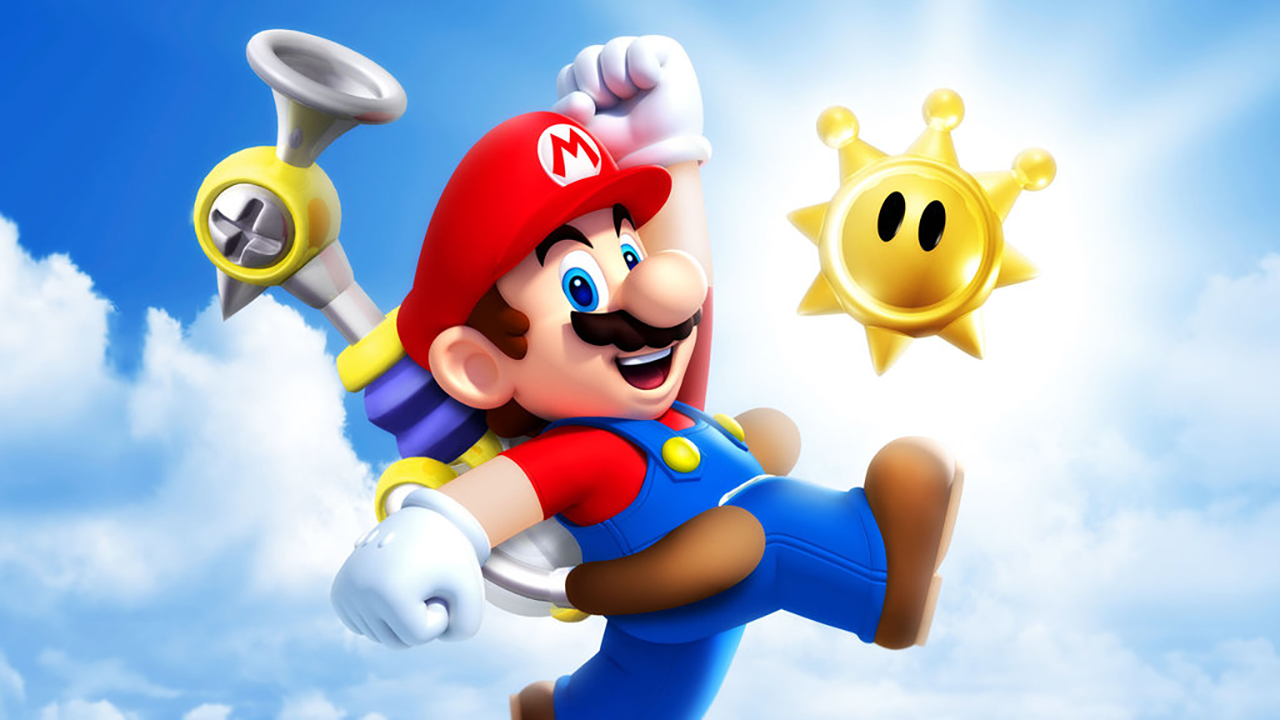
Developer: Nintendo EAD
Released: 2002
At its core, this game doesn't change the rules set up by Mario 64 on the Nintendo 64 in any meaningful ways. What it does is use the power of the GameCube to make the levels look much better. Mario's headed for a vacation when he gets caught up in a Bowser-based conspiracy that he gets blamed for, and that tropical theme lends a pervasive joy to the adventure.
More importantly, the addition of a water-shooting backpack that allows Mario to hover and target distant objects throws an entertaining wrench into the formula. Using the water pack to hose off slime, sail above the levels, and attack enemies keeps the formula fresh and compelling. The game also stretches back to the series' classic roots by offering up simple, linear bonus levels that strip away the backpack and set you on paths that recall the original side-scrollers. It's genius.
Read our Super Mario Sunshine review.
14. Viewtiful Joe
Developer: Capcom Production Studio 4
Released: 2003
When it hit the GameCube, Viewtiful Joe made a beautiful splash by introducing 2D action games to a new generation. It was nothing more than a left-to-right button masher, but its over-the-top sense of style and grace rocketed superhero Joe into instant popularity. So much, in fact, that Capcom ended up turning the game into an entire franchise in record time, spawning four titles and an animated series within two years.
It wasn't just the slick look, either; the fighting was involved and totally different from any other brawler out at the time. Joe's time-screwing VFX abilities let you dodge enemy attacks and counterattack with a flurry of Matrix-style acrobatics that made you think, if even for a brief moment, that the GameCube was the coolest thing on the planet.
13. Metal Gear Solid: The Twin Snakes

Developer: Konami
Released: 2004
Take the single greatest game of the PS generation, inject a fresh graphical update and all the cool new gameplay features from its PS2 sequel, and you've got an instant classic. Remade by Canadian developer Silicon Knights and filled with new cutscenes by Japanese film director Ryhei Kitamura (Versus, Godzilla: Final Wars), Twin Snakes packed in enough cool new stuff to wow newcomers and keep the series' faithful riveted.
But underneath all the new stuff is the same enduring story of war, death, love, and betrayal that made Metal Gear Solid an international phenomenon. Solid Snake is just as likable, Meryl is just as tragic, and the bosses are still human enough that you'll actually feel kinda bad after you kill them, even if you desperately wanted to while fighting them. Some of the Matrix-inspired cutscenes come off as more laughable than exciting now, but Twin Snakes' sneaky-shooty gameplay is some of the best you'll find on the Cube or any other system.
12. Pikmin 2
Developer: Nintendo EAD
Released: 2004
The first Pikmin shrouded complexity under a cutesy blanket of lovable Pikmin while slapping an in-game 30 day time limit on our enjoyment. Pikmin 2 removes those needless shackles, allowing us to enjoy even more complex Pikmin adventures for as long as we desire. Pikmin 2 adds the bulbous Purple Pikmin, whose stout frame allows for extra-strong attacks, and the rail-thin White Pikmin capable of poisoning enemies.
Not only that, but now we have two captains, Olimar and Louie, who can guide the Pikmin separately. These small additions create an infinity of new possibilities, demonstrating sheer genius in game design. Pikmin 2 is a Nintendo classic.
Read our Pikmin 2 review.
11. Paper Mario: The Thousand Year Door
Developer: Intelligent Systems
Released: 2004
If we were ranking the most charming games of the system, this would be at the top of the list. On the surface it almost seems like the simplistic visuals are left over from the N64, but after a few hours of play you'll notice all kinds of little effects that keep things lively and exciting. The minimalist approach let the developers create some truly bizarre environments and give Mario strange ways of navigating them. He can turn into a paper airplane to soar across gaps or turn sideways and slip in between tight spaces, for example.
Most of the game looks 3D but still takes place in traditional, 2D Mario space. You can mess with this cutesy world by flipping switches that cause certain areas to "grow" stairs or open new paths as if flipping to a new page in a book. It's a one-of-a-kind look that no other series really gets right, yet makes perfect sense when set inside the Mushroom Kingdom. The easy-to-grasp combat had a secret depth to it, with an interesting audience mechanic in all the battles, and if you were good enough with the timing you'd barely take any damage at all. It kept things active in a genre known for boring battles. Plus, it had a brilliantly funny localization that added new dimensions to the iconic characters starring in the title.
10. F-Zero GX
Developer: Amusement Vision
Released: 2003
Pure, unrelenting speed. It's one thing for a racing game to make it seem like you're driving 150mph, but it's quite another when the game can fling your hovercraft through a mile-high loop at 2,000 kph. Even with all the other cars on the screen, blasting at top speed in a fire-spewing cave with a magnetized pole acting as a course, F-Zero GX does not stutter. It's the fastest game on the system, not to mention one of the prettiest when viewed on widescreen, and progressive scan support ensures this game will still look presentable years later.
F-Zero GX goes from fairly challenging to rip-your-hair-out impossible, requiring you to race perfectly without making a single mistake. If you slip once, you'll see about 20 speeding hovercrafts fly past in less than half a second. It's this ultimate hardcore appeal that makes F-Zero GX such a standout game, for no other title on the system is so unapologetic about its infuriating difficulty. Then you dive into the story mode, where things somehow get even harder. Overcoming these races is a source of pride that any gamer would be glad to brag about. Throw in a customizable garage mode and you've got something to keep gearheads, speed freaks, and hardcore nut jobs entranced for hours.
Read our F-Zero GX review.
9. Eternal Darkness: Sanity's Requiem
Developer: Silicon Knights
Released: 2002
Cribbing heavily from the works of classic horror scribe H.P. Lovecraft, this terror epic spans thousands of years, putting you in control of a dozen people forced to battle unimaginable horrors from beyond the cosmos. Load this up, and you'll explore haunted ruins as an escaped Cambodian slave; bash your way to the dark secret at the heart of an old cathedral as a Franciscan friar; and fight out of a horrific dungeon as a Canadian firefighter, among other activities. And the whole time, you'll be spooked out of your mind.
The beauty of Eternal Darkness is that it doesn't need to use sudden shocks to scare you senseless. Even the monsters and traps aren't that terrifying when compared to the delight the game takes in messing with your head. You might enter a room and suddenly be decapitated, only to reappear unharmed in the previous hallway a few seconds later. Your size changes. Rooms turn upside down. Disembodied voices howl madness into your ears. And it all gets worse as your character gets pushed further and further toward the brink of sanity. Are the demons real, or have you just gone crazy? Who says it can't be both?
Read our Eternal Darkness review.
8. Animal Crossing
Developer: Nintendo EAD
Released: 2001
Nothing that spectacular happens in Animal Crossing. Much like in real life, you buy a home, get a job, shop for material possessions, visit friends, celebrate holidays, and get exploited by money-hungry capitalists like Tom Nook. Seriously, that's about as exciting as it gets. So why bother? Because, unlike reality, Animal Crossing is all about freedom and relaxation.
An average gameplay session usually includes nothing more strenuous than fishing by the river, collecting rare butterflies, and dropping in on an animal neighbor to check out their new coffee table. Your most important mission may be delivering a letter from a friendly cat to an even friendlier dog. It's an endlessly charming and refreshing break from the stresses of the actual world... not to mention the stresses of other, more violent and frustrating video games. You'll never throw your controller at this one, so long as that dastardly Nook isn't asking for more money.
7. Soulcalibur II
Developer: Project Soul
Released: 2002
The original Soulcalibur for the Dreamcast showed us just how beautiful and addictive a 3D fighter could be. Taking the formula to the next level seemed like a challenge, but Namco made it look effortless with this totally engrossing sequel. With a single-player mode worth the time investment and a bevy of new characters to clash blades with, it oozed polish and playability from every pore.
Better, though, was Namco's clever gimmick of including a special character in each console's version of the game. PS2 got Tekken's Heihachi; the American console, Xbox, got comic hero Spawn. But neither could hope to compete with Zelda hero Link. The developers did a stellar job of implementing him, as well. This was the most detailed version of the character we'd seen at that point, with beautifully choreographed swordplay and many of the special abilities he had in his adventures (watch out for those bombs!). In short, it elevated the GameCube edition above the other two and briefly brought a serious edge to the GameCube's lineup.
Read our Soulcalibur II review.
6. Star Wars Rogue Leader
Developer: Factor 5, LucasArts
Released: 2001
Blowing up TIE fighters in an X-Wing is cool. Doing so in a superb game on the day you bought your shiny new GameCube is mind-blowing. Rogue Leader was the first GameCube game to really show off what Nintendo's purple lunchbox was capable of, pumping out beautiful visuals to match its rapid-fire action.
From the epic trench run on the first Death Star, to the final assault at the Battle of Endor, Rogue Leader's battles pile on the action as you tangle with the best pilots the Empire has to offer. The dogfights are fast and addictive, the multiple mission objectives punch in some decent variety, and the scenery looks amazing as it zooms past. As far as space and aerial combat in the Star Wars universe goes, this is still the definitive console game, and that's saying a lot.
5. Prince of Persia: The Sands of Time
Developer: Ubisoft Montreal
Released: 2003
When Prince of Persia, an iconic video game franchise, was announced for a reboot, tenured gamers showed some concern. This was a classic after all, and sometimes it's best to let sleeping dogs lie. Ubisoft, however, delivered tenfold with Prince of Persia: The Sands of Time, transforming the old name into a new classic. Sands of Time focused on agility and acrobatics, feats not normally seen in these types of action games.
This Prince could walk across walls and jump leaps and bounds across the terrain. Best of all, if you fell into a pit, you could use the Sands of Time to reverse your actions and try again, a beautiful addition for many a slow-fingered player. Sands of Time brought the Prince into the present, exposing this timeless franchise to a new generation.
4. Super Smash Bros. Melee
Developer: HAL Laboratory
Released: 2001
Take all its world-renowned characters, throw them into painstakingly crafted arenas, and have them fight until only one is left standing. Mario versus Link versus Samus versus Bowser, all inside a perfect recreation of Super Mario Bros.' first level. It's a death-match made in heaven. The gameplay has that beautiful "easy to learn, hard to master" quality, meaning a five-year-old can jump right in while experienced scrappers can go on to find limitless incentives to keep playing.
A challenging adventure mode takes all the same moves and brilliant animations from the fighting game and puts them into a side-scrolling romp that still plays better than most games made since. With unlockables galore, this is one giant celebration of everything Nintendo. Melee was the best-selling GameCube title and won tons of praise from critics and the public. Despite the Wii sequel Brawl expanding on it in so many ways, many fans still prefer this one.
Read our Super Smash Bros. Melee review.
3. Resident Evil 4
Developer: Capcom
Released: 2005
Resident Evil 4 keeps the action and the scares coming at a rapid pace, mixing brutal firefights, buckets of gore, and interactive cutscenes with the best visuals the last generation of consoles had to offer. Unlike previous Evils, this one loads you up with enough guns and ammo to stop an army of rhinos, but you'll need every last bullet to punch your way through the hordes of maniacs standing between you and the President's daughter.
RE4 is tough, make no mistake, but its moody atmosphere and deep, cinematic action will keep you riveted even after the demoralizing gut-punch of watching hero Leon's head sheared off by a chainsaw-wielding freak. If you don't believe us, try playing it for 15 minutes. If you can walk away from the game after the adrenaline-surging sequence in which you barricade yourself into a house as an angry mob swarms outside, then you've got more willpower than we ever will.
Read our Resident Evil 4 Remake review.
2. Metroid Prime
Developer: Retro Studios
Released: 2002
Despite the insane odds stacked against Samus and her first 3D adventure, all we needed was five minutes to realize why this was an amazing product. How? First off, Samus' new planet looked like a real place, with uneven caves and rough patches of vegetation strewn all over the map. And developer Retro Studios revolutionized an ailing franchise in the most startling way possible; by presenting a thought-heavy puzzler in the same manner as a first-person shooter.
The viewpoint didn't once feel tacked-on or unnecessary, instead drawing you in even more. Rain splatters on the visor and steam effects creep up and obscure your view, creating an ever-increasing sense of claustrophobia that stays with you from one save point to the next. In short, it's everything a franchise reborn wants to be.
Read our Metroid Prime Remastered review.
1. The Legend of Zelda: The Wind Waker
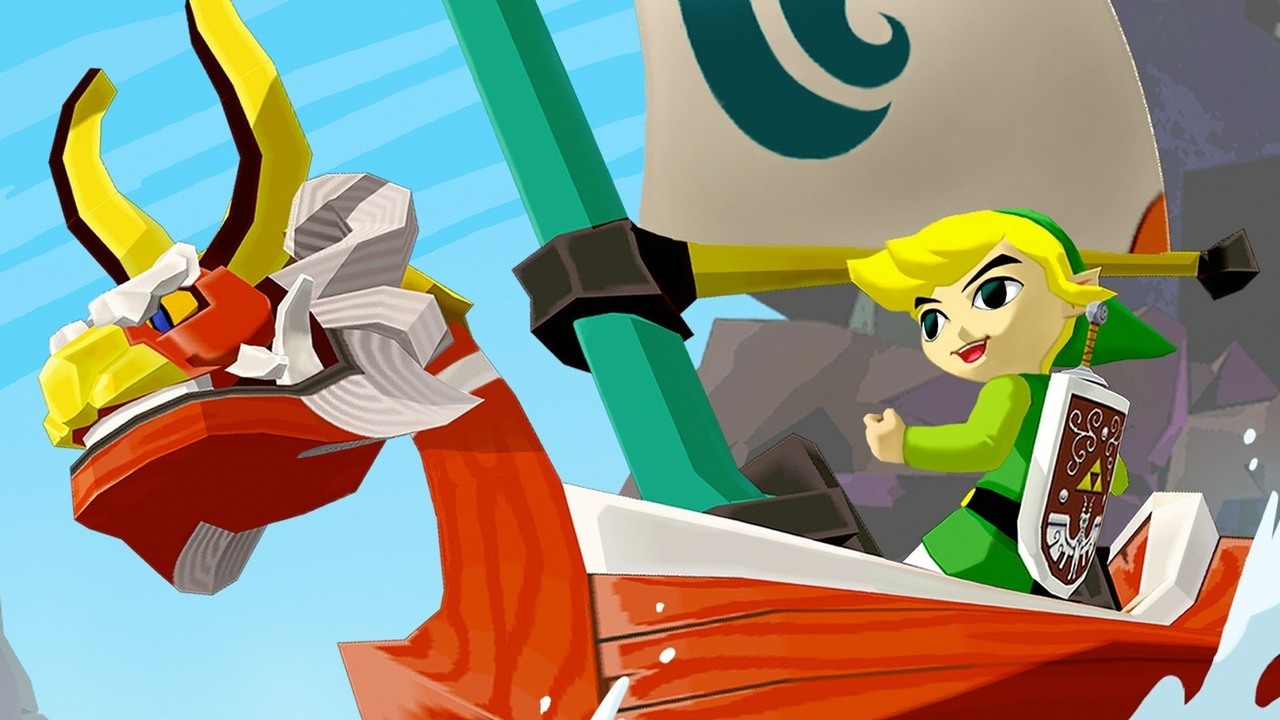
Developer: Nintendo EAD
Released: 2002
Anyone who complains that the best Zelda games don't take enough chances must have missed Wind Waker (though the Wii U HD remake has hopefully remedied that), as it risked everything by transforming the whole world and turning it inside out. The clean, colorful Disney style will never be dated; it's vibrant and beautiful forever. Likewise, switching the setting from endless green forest to endless blue ocean, and your means of transportation from horse to boat, proved that the Zelda formula really is immortal.
Finally, and most controversially, Link is recast as a bite-sized tyke. But the brave spirit of the character is intact, and his wide-eyed childlike expressions make him more sympathetic than ever before. If you can get through the scene where he says goodbye to his grandmother without getting a little emotional, then you're made of tougher stuff than us.
Read our The Legend of Zelda: The Wind Waker review.
Ready to take things even more old school? Check out our list of the best SNES games of the 16-bit era. Or, for newer experiences, read our list of the best Switch games around.



